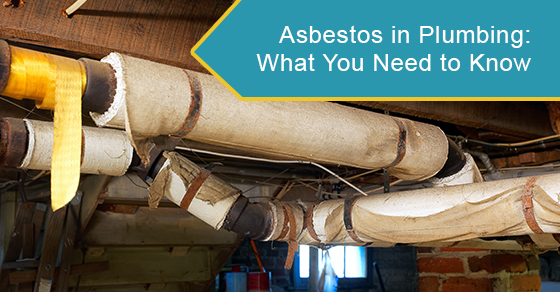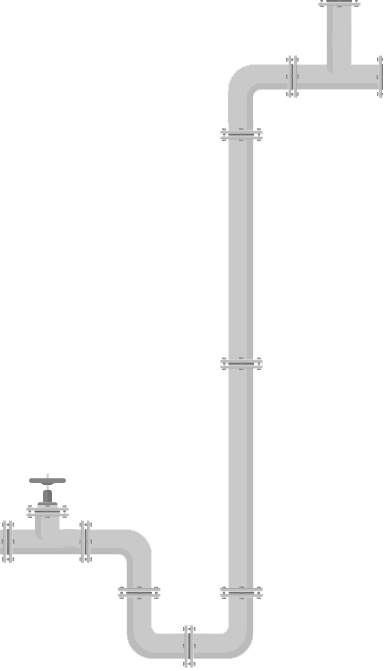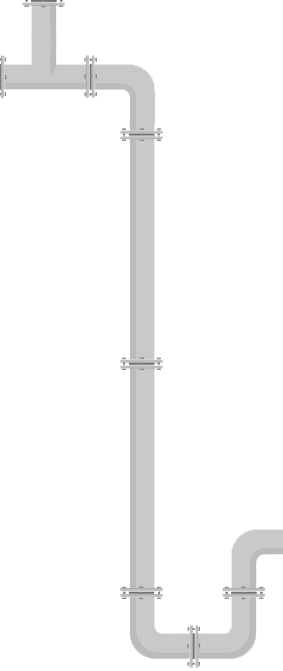Asbestos in Plumbing: What You Need to Know
Posted by Jason Genah on 21-07-2022

When people hear “asbestos,” they often dismiss it as a thing of the past. The ill-effects of this naturally occurring mineral have been well-publicized since the 1990s.
However, did you know that while most Canadians think asbestos has been long gone, it wasn’t fully banned until 2018?
That means, even today, asbestos is present in things like car clutches, brake pads, and roofing materials. As well, if you have an older home, you likely have asbestos in multiple areas of your house.
There aren’t too many people who know more about asbestos in the home than plumbers. Keep reading to learn more about asbestos and where you may have some in your home.
Asbestos in Plumbing
From about the 1940s to the 1980s, asbestos was regarded as an essential material for plumbing. Since it is nearly indestructible, fire-resistant, and relatively inexpensive, plumbers were keen on getting this material into homes, offices, and commercial buildings.
Sadly, asbestos was used for decades before people realized the health issues it caused. As a result, there are 1900 cases of lung cancer from asbestos exposure in Canada each year.
On top of that, studies show that even with the precautions they take now, plumbers are still one of the highest-risk groups for asbestos exposure.
With plumbers being 16 times more likely to develop asbestos-related illnesses than the general population, removing asbestos is one project you won’t want to DIY. Exposure to asbestos in plumbing puts you at risk of developing:
- Lung cancer
- Mesothelioma
- Ovarian cancer
- Laryngeal cancer
- Asbestosis
Keep in mind that there is no safe level of exposure to asbestos. Every time asbestos is disturbed in your home, the chances of you inhaling some goes up.
You may not have symptoms of exposure for decades, so don’t put yourself at risk. Hiring a plumber in Scarborough is the safest way to upgrade or repair your plumbing fixtures while minimizing your exposure.
Read on for five plumbing parts in your home that may contain asbestos.
1 Piping insulation
Asbestos was typically applied on water pipes, tanks, boilers, and ducts to provide insulation. The texture of asbestos is very similar to cotton, and its structure is extremely efficient at slowing down heat transfer.
You’re most likely to find those insulated fixtures in your attic, floor ducts, and basement. There are a few different types of insulation methods that could possibly contain asbestos. The four most common types of insulation are:
Blanket Insulation: Insulation in this form comes in pre-cut pieces or on a large roll that looks like a big roll of cotton toilet paper.
The material is extremely flexible, which makes wrapping it around pipes easy. The wrap method was commonly used for concrete pipes, which are also known to house asbestos.
That’s two potential layers of asbestos that a plumber will have to cut through to repair or replace pipes.
Block Insulation: If you have large, rigid panels glued to the wall to trap heat, your home has block insulation. In the past, these panels were made out of pure asbestos but are now generally made from foam.
Loose-Fill Insulation: This type of insulation is blown into place with special equipment and has a light, fluffy texture.
This was an extremely popular option for insulating attics. Loose-fill that contains or is made from asbestos is very dangerous; it only takes a slight current to send asbestos dust flying through the air.
Spray-On Insulation: Spray-on insulation was popular for hard-to-reach areas like ceilings and attics.
It’s sprayed in a liquid form that expands to fill gaps as it dries and solidifies. You can spot this insulation in many commercial buildings where the ceilings have a thick layer of grey material.
2. Water heater
It’s not the water heater itself that contains asbestos (that would be bad), but the heat shield around it.
Since asbestos is a great insulator, it’s common to see asbestos heat shields wrapped around water heaters. Sometimes, the heat shields were made from asbestos millboard.
3. Cement
Most people are surprised to hear this one, but cement has applications outside of paving roads. In plumbing, cement can be used for plumbing pipes, pipe-repairing compounds, and even toilet installation.
Asbestos in concrete is usually harmless because it’s undisturbed. However, when a plumber has to cut through cement to make a repair, asbestos fibres can be released.
4. Joint compound
The weakest point of a pipe is where it ends or meets another one. Joint compound is a dust that is mixed into a thicker consistency that can be used to seal ends.
Asbestos was commonly added into joint compounds because it provided strength and heat resistance.
5. Gaskets
In the past, the use of pumps, valves, and gaskets with asbestos fibres was extensive. Asbestos was popular for mechanical seals like gaskets because of its durability and its resistance to fire.
Just like insulation, there were a few different types of gaskets that contained asbestos. Older homes most likely have one of the following four types:
Asbestos Rope Gasket: Asbestos fibres were weaved to form a soft rope that was commonly used to fireproof gaskets on boilers, furnaces, and doors.
The loose nature of the rope makes accidentally releasing harmful asbestos fibres easy. Nowadays, rope gaskets made from fibreglass are much more common.
Asbestos Oval Gasket: Unlike rope gaskets, an oval gasket has a thin wire insert that gives it more strength and holds its shape.
Even though oval is their name, you can also find octagonal and circular gaskets. You may also hear these referred to as “ring gaskets.”
Asbestos Spiral Wound Gasket: To make this type of gasket, layers of metal and asbestos are stacked concentrically. These gaskets are very strong, so they’re used for high-pressure fixtures like boilers.
Asbestos Sheet Gaskets: When gaskets needed to be mass-produced, compressed asbestos fibres offered a convenient solution. The fibres were pressed into a cardboard-like sheet so plumbers could cut various sized gaskets on the spot.
Ready to book?
If you are looking for an experienced plumber in Scarborough to tackle asbestos, you came to the right place. At Drain King Plumbers, our reputation in the GTA precedes us, so call us at 833-983-5663 or click here for more information.




